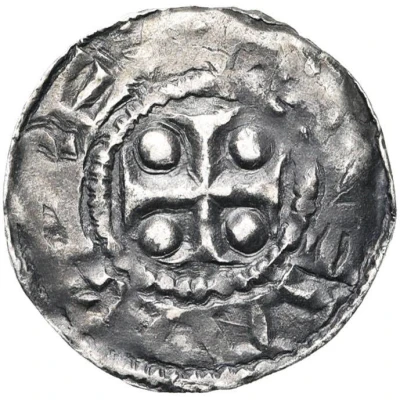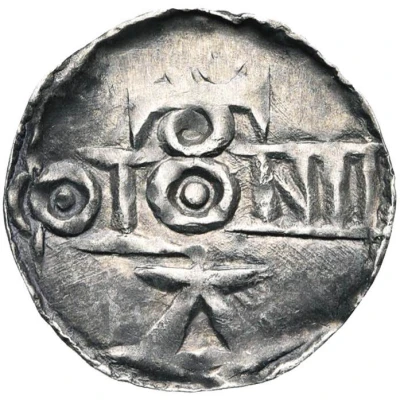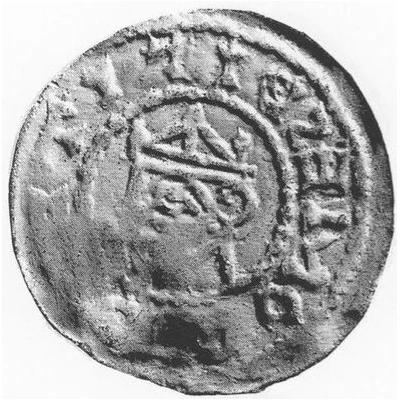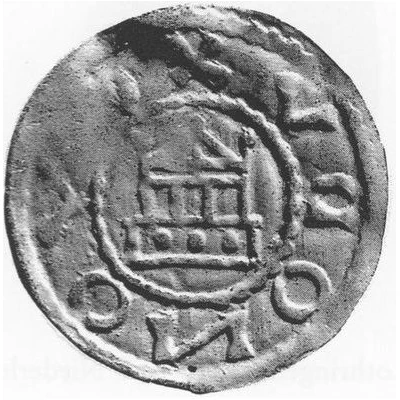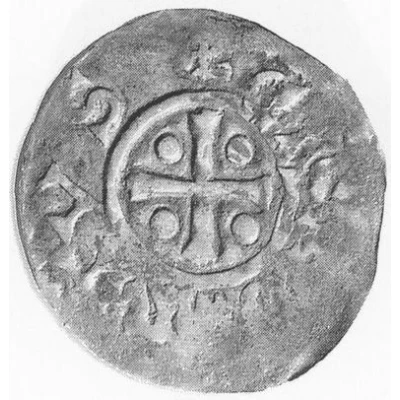
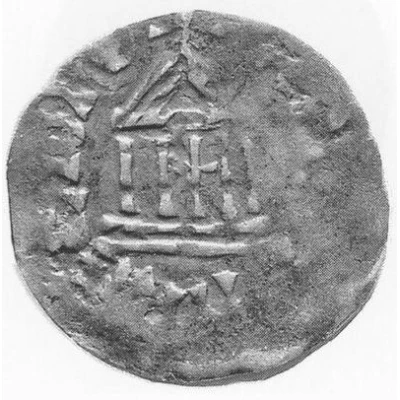

© Münzkabinett - Staatliche Museen zu Berlin (CC BY-SA 4.0)
Denier - Gislebert Bruges ; temple
| Silver | - | - |
| Issuer | Duchy of Lotharingia (Lotharingia, Carolingian States) |
|---|---|
| Duke | Gilbert (928-939) |
| Type | Standard circulation coin |
| Years | 928-939 |
| Value | 1 Denier (1⁄240) |
| Currency | Pound (855-959) |
| Composition | Silver |
| Shape | Round (irregular) |
| Technique | Hammered |
| Orientation | Variable alignment ↺ |
| Demonetized | Yes |
| Updated | 2024-10-09 |
| Numista | N#371600 |
|---|---|
| Rarity index | 100% |
Reverse
Legend around a tetrastyle temple.
Script: Latin
Lettering: XRISTIANA RELIGIO
Interesting fact
One interesting fact about the Standard circulation coin Denier - Gislebert (Bruges ; temple) (928-939) from Duchy of Lotharingia (Lotharingia, Carolingian States) made of Silver is that it features a unique design on its reverse side. The coin's reverse depicts a temple, which is believed to represent the Temple of Jupiter Optimus Maximus, a Roman temple built in the 1st century AD in what is now Bruges, Belgium. This design is significant because it highlights the influence of Roman architecture and culture on the Carolingian Empire during the 10th century. Additionally, the fact that the coin was made of silver, a valuable and durable metal, suggests that it was an important form of currency during that time period.
